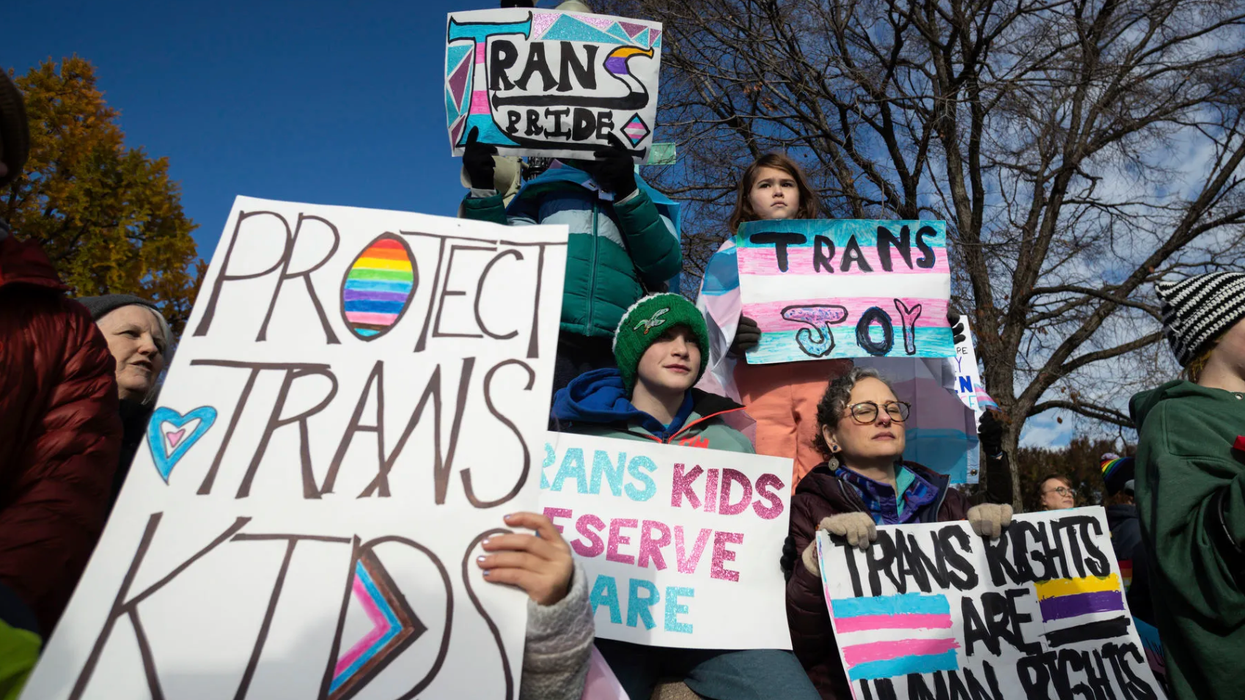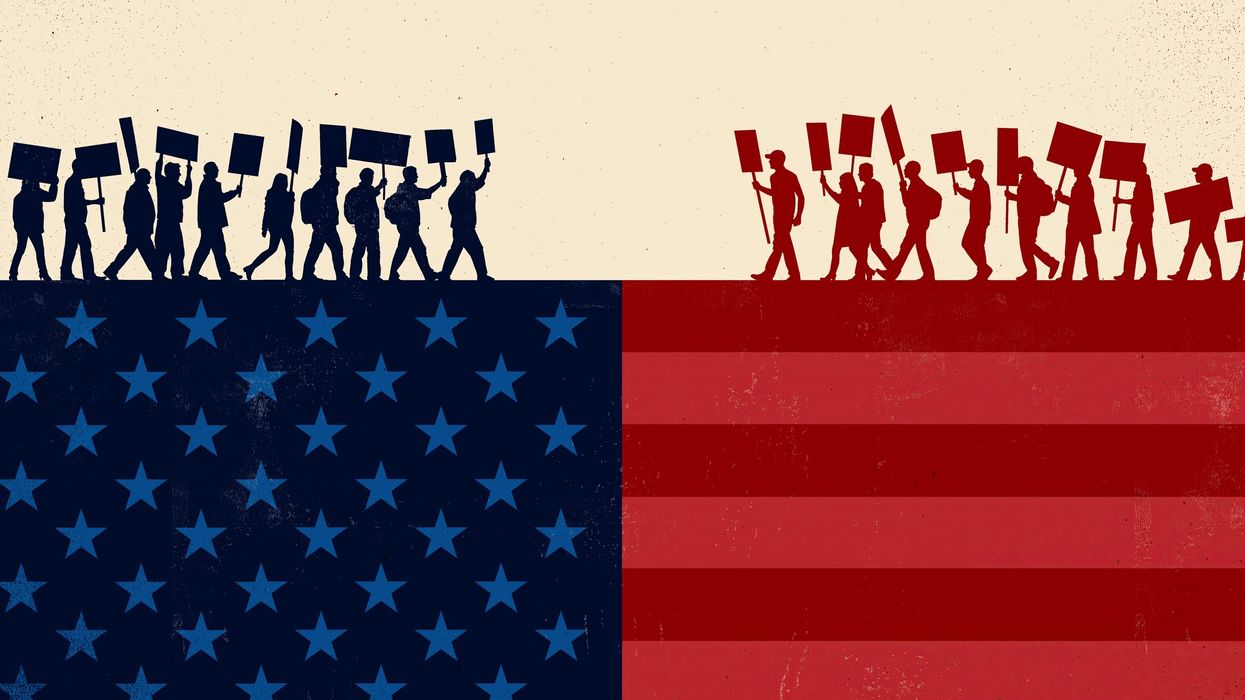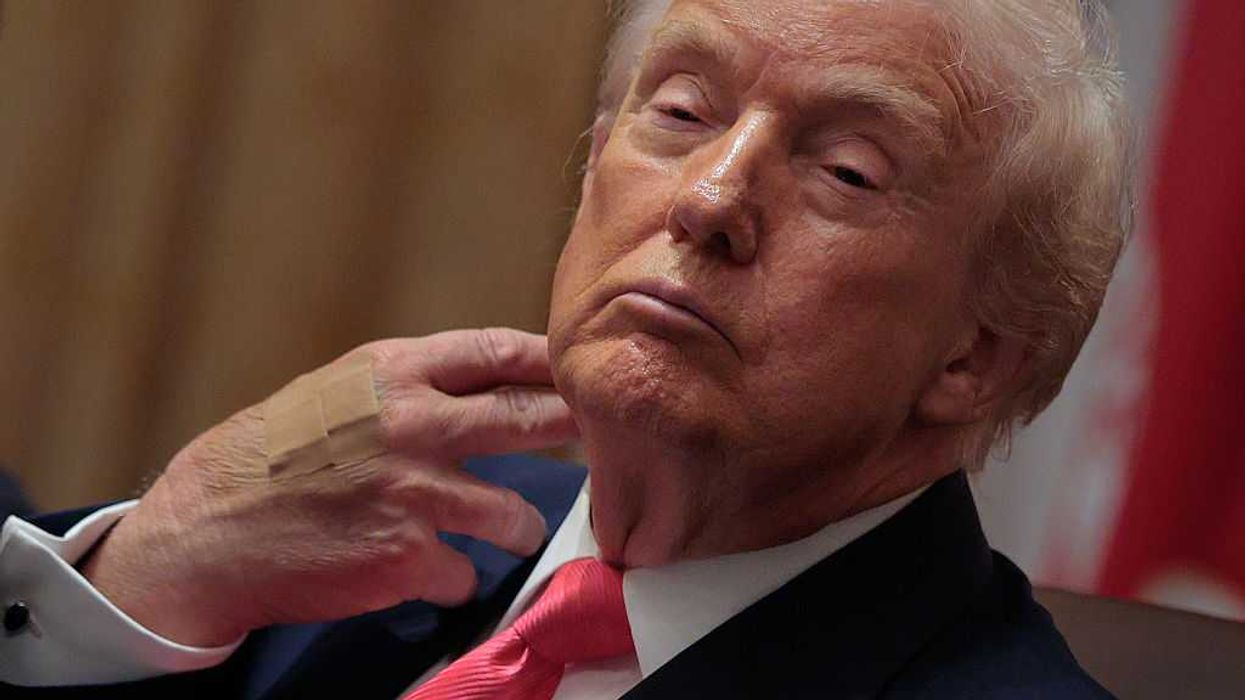President Donald Trump has directed the federal government to begin a campaign to monitor and influence K-12 curriculum — a move that former Education Department staff describe as unprecedented interference into the country’s education system with the purpose of targeting marginalized groups, particularly transgender students.
In an executive order signed Wednesday, Trump instructed the secretary of education, secretary of defense and secretary of health and human services to work with the attorney general to enforce “patriotic education” and eliminate federal funding for schools promoting “indoctrination” based on “gender ideology and discriminatory equity ideology.”
These and other terms used in the order echo attempts by Republicans in red states to restrict teaching critical race theory, Black history, intersectionality and social justice, and to ban classroom instruction on sexual orientation and gender identity. For example, “discriminatory equity ideology” is defined within the order as, among other things, the belief that “the United States is fundamentally racist, sexist, or otherwise discriminatory.” Borrowing language from a recent executive order that signals the Trump administration’s opposition to transgender identity as a whole, this new order seeks to bar teachers from supporting trans students by using that student’s name and pronouns or allowing these students to use restrooms that match with their gender identity. Teachers have been under this kind of political pressure for years, as states like Florida and Kentucky enact policies banning LGBTQ+ content in schools and restrict how teachers can interact with trans students.
Catherine Lhamon, an assistant secretary for the Office for Civil Rights at the Department of Education under former President Joe Biden, said that complying with this order is ultimately impossible for federal agencies, in part because the order lacks clarity and clashes with other orders signed by Trump. She also believes it is illegal.
“The executive order effectively directs curricular instruction and it is, in multiple statutes, against the law for the United States Department of Education to direct curriculum, which is locally controlled,” Lhamon said. The Department of Education Organization Act, the federal law passed by Congress in 1979 that first established the agency, makes that clear. By directing what school staff can and cannot say in a public school, the order also seems to contradict an earlier order signed by Trump guaranteeing respect for free speech under the First Amendment, she said.
President Trump campaigned on returning power over students’ education to the states, even going so far as promising to shut down the Department of Education entirely. But this executive order explicitly uses federal funding to determine what can be taught in schools while labeling certain concepts as divisive, said Katy Joseph, formerly chief of staff for the Education Department’s Office for Civil Rights.
The executive order gives federal agencies 90 days to create a plan to discover and restrict all federal funding sources that “directly or indirectly support or subsidize the instruction, advancement, or promotion of gender ideology or discriminatory equity ideology” in K-12 curriculums and teacher certification. Those agencies also have 90 days to figure out how to restrict funds from being used at schools to support transgender students’ social transition — including through school staff not alerting parents that their students are transgender.
The order also gave the secretary of education, who has yet to be confirmed by the Senate, 120 days to reestablish the 1776 Commission, an advisory group created during the first Trump to promote a specific version of patriotism in school curricula.
Rachel Laser, president and CEO of the religious freedom advocacy organization Americans United for Separation of Church and State, said in a statement that bringing back the commission “would advance narrow Christian nationalist beliefs about gender and a white-washed American history.” It would also blur the lines between church and state, which, she said, stands in direct opposition to the nation’s founding principles.
Nicholas Hite, a senior attorney for Lambda Legal, a civil rights organization focused on the LGBTQ+ community, called the executive order “patently unconstitutional nonsense.” In a statement, he said it is“designed to demean and deny the very existence of transgender and other queer youth.”
Hite continued: “Bans on using the correct restrooms threaten the safety and health of transgender and nonbinary youth. Denying the opportunity to participate in school sports programs with their classmates deprives them of the many opportunities and developmental benefits all agree come from joining in team sports. And compelling teachers to tell parents about a student’s in-school request that a chosen name or pronoun be used — contrary to the student’s wishes — can expose the student to violence in the home.”
To Joseph, Trump’s blitz of executive orders in the first days of his presidency are part of a clear strategy: to demonize certain marginalized groups and distract people from the larger picture of his administration’s broader agenda to undermine democracy.
“Trans youth and trans folks more broadly are very high on that list, as well as immigrants, students who are here are on student visas, and now educators are being pulled into that as well,” she said.
This new executive order targets practices that support transgender youth while broadly undermining the ability for all young people to learn critical thinking skills and accurate history, Joseph said. Until this point, the federal government had not had any role in curriculum development; the task had always been a local process, with limited oversight from the federal agency to investigate potentially hostile learning environments, she said.
In addition to Lambda Legal, the Human Rights Campaign, Advocates for Trans Equality and other LGBTQ+ advocacy groups condemned Trump’s executive order on Wednesday, during a week where the administration made several attempts to roll back LGBTQ+ rights at the federal level.
“Our team of lawyers and policy analysts will be scrutinizing the executive order closely in the coming days for its impact on our community, and we stand ready to use every resource at our disposal, from Capitol Hill to the courts, to defend the rights of all students, parents, and teachers who deserve to feel safe and welcome at school,” said Rodrigo Heng-Lehtinen, Advocates for Trans Equality (A4TE) executive director, in a statement.
Several lawsuits against the Trump administration have already been taken up in response to executive orders that restrict LGBTQ+ rights. GLAD Law and the National Center for Lesbian Rights are challenging Trump’s executive order barring transgender people from the military. An incarcerated trans woman has filed a lawsuit against Trump’s broad executive order mandating that the federal government only recognize two sexes — an order that would require housing trans people in federal prisons based on their sex assigned at birth.
“All young people – including LGBTQ+ students and the children of LGBTQ+ parents, who are accepted by the adults in their life have much better outcomes for mental health and other metrics,” Kelley Robinson, president of the Human Rights Campaign, said in a statement. “We owe it to them to ensure that they feel safe, respected and ready to learn when they’re at school.”
'Patriotic education': Trump orders federal push to monitor K-12 curriculum was originally published by the 19th.
Orion Rummier is an LGBTQ+ reporter for The 19th, his reporting ranges from health policy explainers and court deep dives to statehouse breaking news and features on LGBTQ+ daily life.
Nadra Nittle contributed reporting.



















